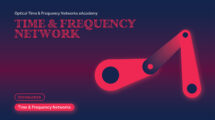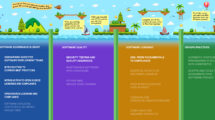Words: Ezri Carlebach, Guest Contributor.
Individual works of science fiction and trends within its wider development are having a growing impact, particularly through diverse and non-Western works which upend the genre’s technocratic image. But it’s not all spaceships and aliens, as writer and lifelong science fiction fan Ezri Carlebach explains.
Every year at the Christmas holiday period, tech guru and global philanthropist Bill Gates shares his book recommendations. In 2022, instead of mentioning new books, Gates revealed his all-time favourites. High on his list was a 1961 science fiction novel called Stranger in a Strange Land, by Robert Heinlein. There is plenty to say about Heinlein and his, at best, confused politics. But the point Gates was making relates to the way his own thinking was shaped by Stranger in a Strange Land and other works of SF (connoisseurs prefer ‘SF’ to ‘sci-fi’, although the terminology is the subject of endless debates). Gates claims that the far-out concepts, technological focus, and future-oriented mindset of SF all contributed to his success in technology and business, from founding Microsoft to creating the Bill and Melinda Gates Foundation. Heinlein’s fiction, Gates wrote, uses “an obviously fictional setting to ask profound questions about human nature”.
Questioning what it means to be human has been a central feature of SF since its earliest manifestations. Mary Shelley’s Frankenstein, published in 1818, has become one of the best-known and most influential English-language novels. Its premise, that technology will lead humans to acquire ‘god-like’ power over life, has had an impact that can be traced through countless plays, novels, movies, and other cultural forms, and, perhaps most strikingly, in deep-seated public attitudes towards technological innovation. Frankenstein is widely held to be the first great science fiction novel, all the more remarkable given that its author was just 18 years old when she wrote it.
With all the current hype about developments in artificial intelligence, such as the dramatic launch of OpenAI’s chatGPT and similar natural language processing tools, there’s been no shortage of commentators pointing out how various works of SF ‘predicted’ what’s happening now, or even ‘created’ it, by inspiring people to copy what they’d read or watched. There are indeed some famous examples of science fiction stories leading to ‘real-world’ innovations. For instance, Robert Goddard, the physicist who built the first liquid-fuelled rockets, was inspired to take up science as a teenager after reading The War of the Worlds by H.G. Wells. And Martin Cooper, the Motorola engineer responsible for creating the first mobile phone, deliberately copied the communicator devices seen in the 1960s TV show Star Trek.
But it’s not the predictive power of science fiction that makes it valuable for organisations of all kinds today. Rather, it’s the ability of SF to open up new perspectives, stimulate imaginative capabilities, and fuel individual and collective innovation. After all, imagination is the single most important ingredient of innovation. Without it there’d be no science and technology, not to mention arts and culture. As we face ever-more complex and technologically driven challenges, the ability to imagine how we might cope in a range of uncertain futures has become a strategic imperative. Foresight exercises like scenario planning have delivered impressive results in the business world but are frequently considered too difficult to execute effectively, largely remaining the preserve of specialist consultants. Yet every one of us is capable of using our imagination, and any one of us might come up with the next big idea, given the right conditions.
Many business leaders are keenly aware of this, with some actively exploring new ways to enhance their ability to project into the future, as a means of escaping the limitations of the past and present. That’s why some of the world’s biggest companies are referencing science fiction stories and even hiring science fiction writers. It grants them access to a mode of storytelling which is both popular and engaging and, at the same time, can stimulate the imagination when tackling strategic and operational problems. While working as a senior executive at Intel, Brian Johnson employed SF writers to develop stories in which new kinds of products and services were featured. He recognised the broader, social role of SF and encouraged the writers to “examine the dark places, the dystopia, and to come up with crazy ideas”. Author Eileen Gunn has written about her experience among a group of SF writers hired by Google, Apple, and other technology firms to give talks to employees and meet privately with R&D departments.
Perhaps unsurprisingly, Harvard Business Review has already published an article urging business leaders to “read more science fiction”. The author, Eliot Peper, is both a published science fiction writer and a business innovation consultant. Even the UK’s Defence Science and Technology Laboratory has caught the SF bug, commissioning short stories from science fiction writers. According to UK Government Chief Scientific Adviser, Dame Angela McLean, “thinking the unimaginable is simply a day in the office for talented sci-fi [sic] writers. Who wouldn’t want to hear what people like that have to say?”
But while the interest in SF in corporate America and the British defence establishment speaks to its potential as strategic tool, for me Bill Gates is right when he highlights its role in questioning human nature and, by implication, the social systems humans create. Despite the profound influence of women in SF, from Mary Shelley onwards, and the contribution of Black authors and fans, the structural sexism and racism within Western culture has limited the presence of diverse voices and narratives in SF.
In the early 1960s, Kingsley Amis famously described SF as “written by white British and American men for white British and American boys”. But that was never the whole story. Star Trek’s pioneering star Nichelle Nicholls, portraying communications officer Lieutenant Uhura, inspired individuals and communities around the world to see Black women as equal contributors at the highest levels of authority. When she felt like quitting the show after the first season, she was persuaded to continue by none other than Martin Luther King Jr. “You have opened a door that must not be allowed to close”, he told her.
As there have always been diverse audiences for SF, so there have always been diverse writers of SF. There is no space here (pun intended!) to list some, let alone all of them. One of the most powerful and intriguing trends, though, is to be found in the political, cultural, and literary phenomenon of Afrofuturism. The subject of a major exhibition at Washington’s Smithsonian Institute, running from March 2023 to March 2024, Afrofuturism is defined by the Smithsonian as expressing “notions of Black identity, agency and freedom through art, creative works and activism that envision liberated futures for Black life.” The critical and commercial success of the Marvel franchise movies Black Panther and Wakanda Forever testify to the global appeal of, and receptiveness to, Afrofuturist ideas.
Today, if you peruse the pages of leading science fiction magazines, or the growing body of scholarly research in SF, or anthologies of the world’s best SF writing, you will see among the authors, editors, publishers, and scholars names that bear every cultural heritage, every form of gender identification, every sexual orientation, every kind of faith and none. Meanwhile, we face unprecedented threats to our common humanity from the new era of AI-driven communications, private-sector space exploration, and biotech advances that have brought us to the brink of artificial speciation – the creation of a human species biologically distinct from homo sapiens. It seems that the shadow of Frankenstein looms large. SF, broadly defined, has dealt with these threats for longer and in greater depth than any other literature. Ultimately, its greatest value may be to warn us of the consequences of failing to put our common humanity at the heart of our technological innovations and social reforms.
The genre unwittingly launched by 18-year-old Mary Shelley more than 200 years ago continues to have such immense impact because it captures the imagination. Aside from the obvious entertainment value, science fiction offers us alternative cognitive maps, prompting new and original perspectives on any situation or challenge. That is something to be celebrated and shared.

Ezri Carlebach is a writer and consultant with articles published in The Guardian and The Economist. He specialises in stakeholder engagement and strategic communication, working across education and training, international development, and arts and culture. He is a member of the Science Fiction Research Association and has held fellowships in the Royal Society of Arts and Royal Anthropological Institute. Ezri lives in Brighton, on the south coast of England.
This article is featured on CONNECT43! Read or download the full magazine here







